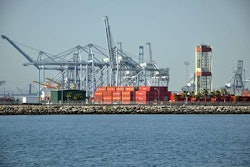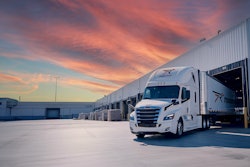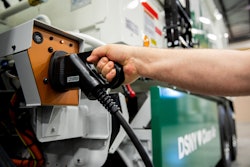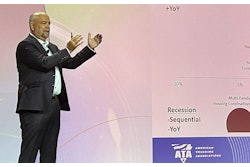Interstate 5 through California, Oregon and Washington will be transformed in 2012 into the first interstate corridor with increased availability of anti-idling technology. Power pedestals will be added to six truckstops and travel centers along the I-5 corridor, five in California, and one in Oregon. Some will open in early 2012; the rest will begin offering the service later in the year.
Those locations will join four existing truckstops and travel centers along I-5 in California, Oregon and Washington outfitted with parking spaces with electrical connections. The new locations to be added under the Shorepower Truck Electrification Project program are:
■ Flying J Travel Plaza in Bakersfield;
■ Pilot Travel Center in Dunnigan;
■ Flying J Travel Plaza in Lebec;
■ Flying J Travel Plaza in Lodi;
■ Pilot Travel Center in Weed; and
■ 7 Feathers Truck and Travel Center in Canyonville, Ore.
STEP, a federally funded project administered by Shorepower Technologies and Cascade Sierra Solutions, is placing connections for AC power at 50 truckstops on the nation’s major freight corridors. I-5 is the first of 10 interstate corridors targeted for increased availability of this anti-idling technology.
“When this phase is complete in 2012, we’ll have power pedestals located between 40 and 200 miles from each other,” says Jeff Kim, president and chief executive officer of Shorepower Technologies. “This will allow the majority of truckers to have assurance that power is available along their route. Truckers and fleet owners have indicated they’re interested in electrical connections at parking spaces, but the biggest question about it they have is whether it’s even available, and if so where. Our long-term goal is to make this a standard service in most places a trucker stops for the night.”
Truckstop electrification “is a game-changing technology because it offers a practical solution to so many problems,” says Sharon Banks, CEO of Cascade Sierra Solutions. “It addresses the problems of noise and air pollution, which affect everyone, not just drivers. It also replaces our reliance on oil, much of which is imported from unstable and unfriendly places, with domestically produced electricity. This is an easily adaptable and affordable way to help the supply chain go green.”






![Volvo Vnl Sleeper Review[20]](https://img.ccjdigital.com/mindful/rr/workspaces/default/uploads/2025/11/volvo-vnl-sleeper-review20.lrVppY9UDR.jpg?auto=format%2Ccompress&fit=crop&h=400&q=70&w=600)




